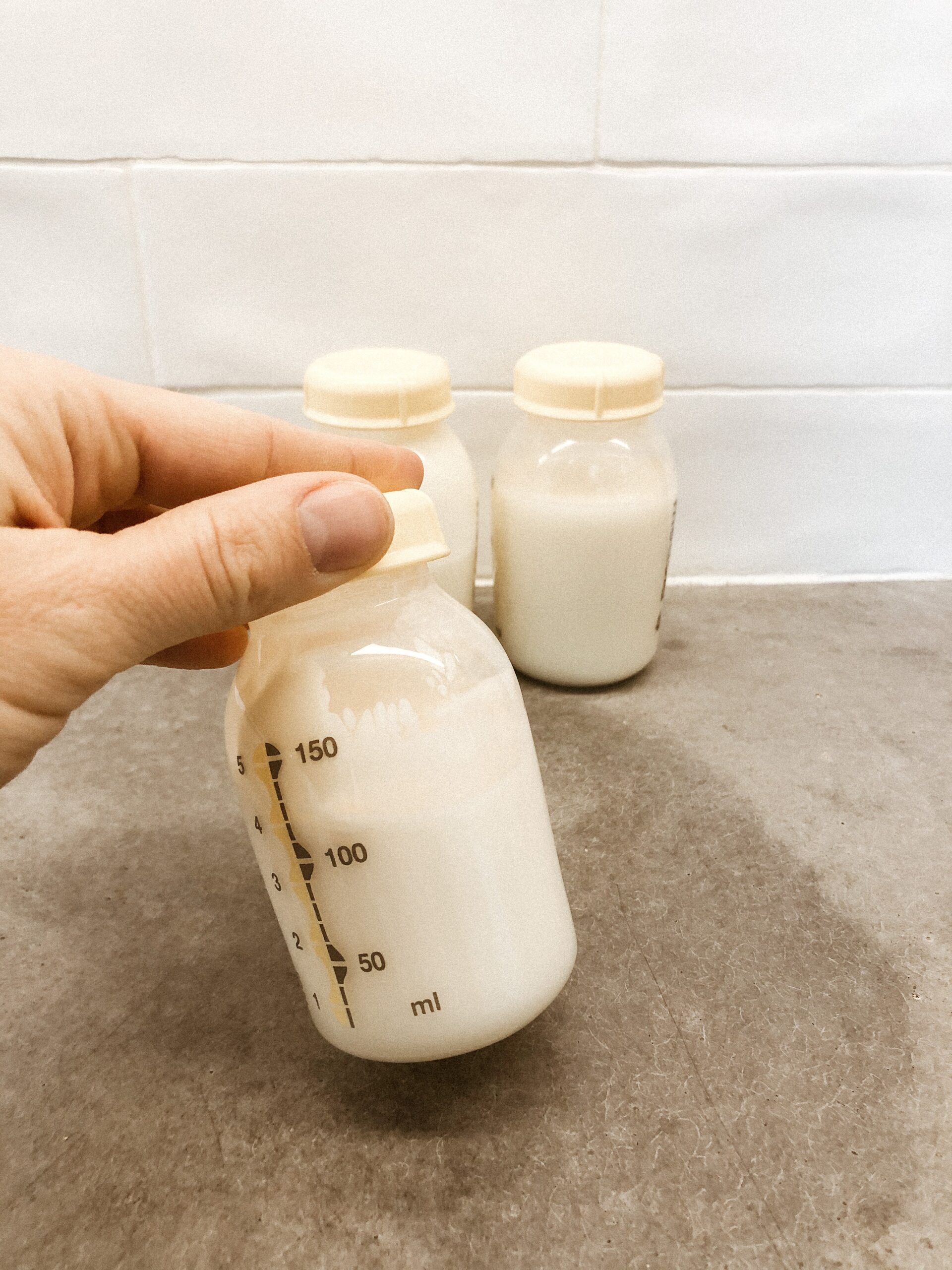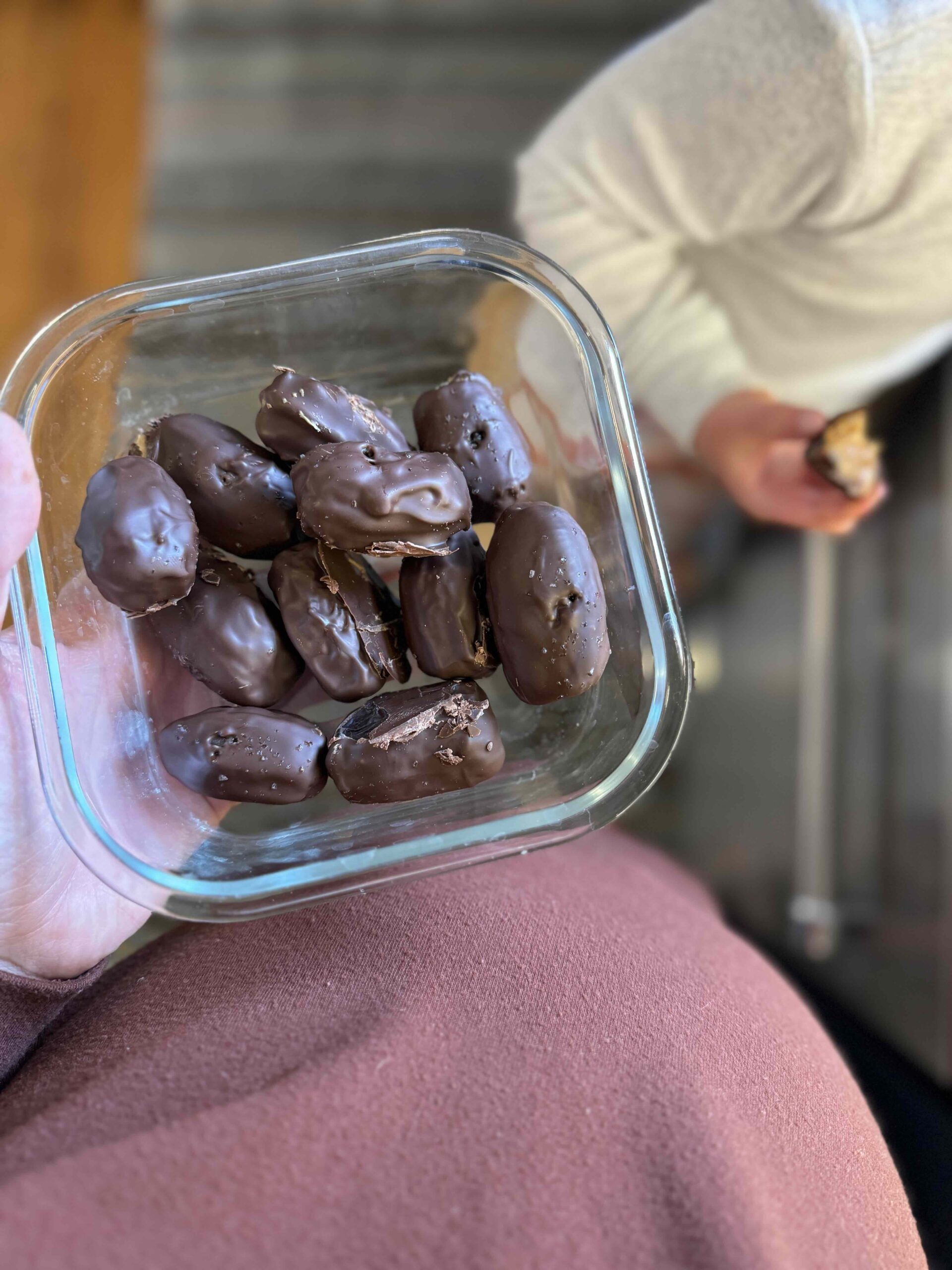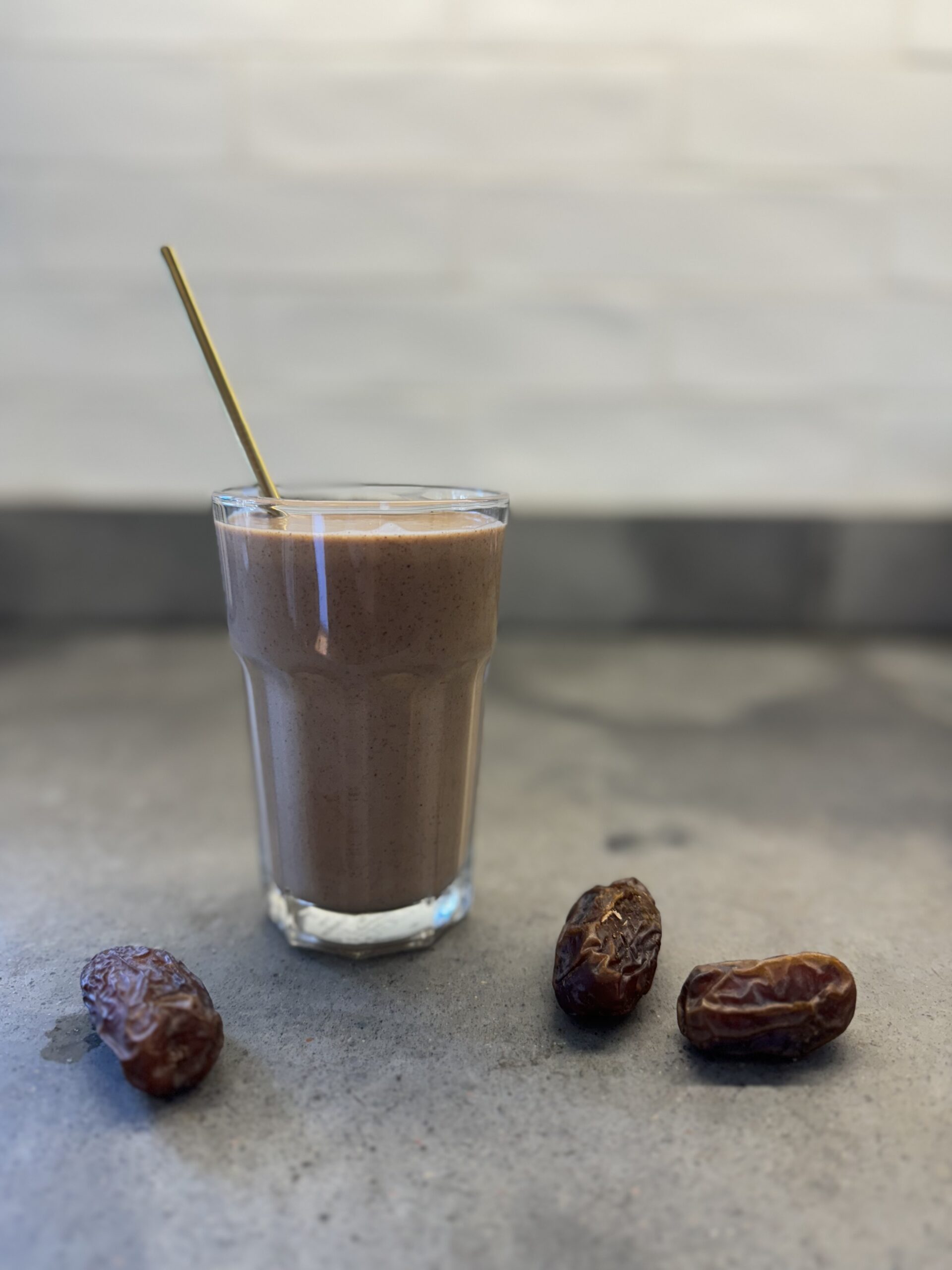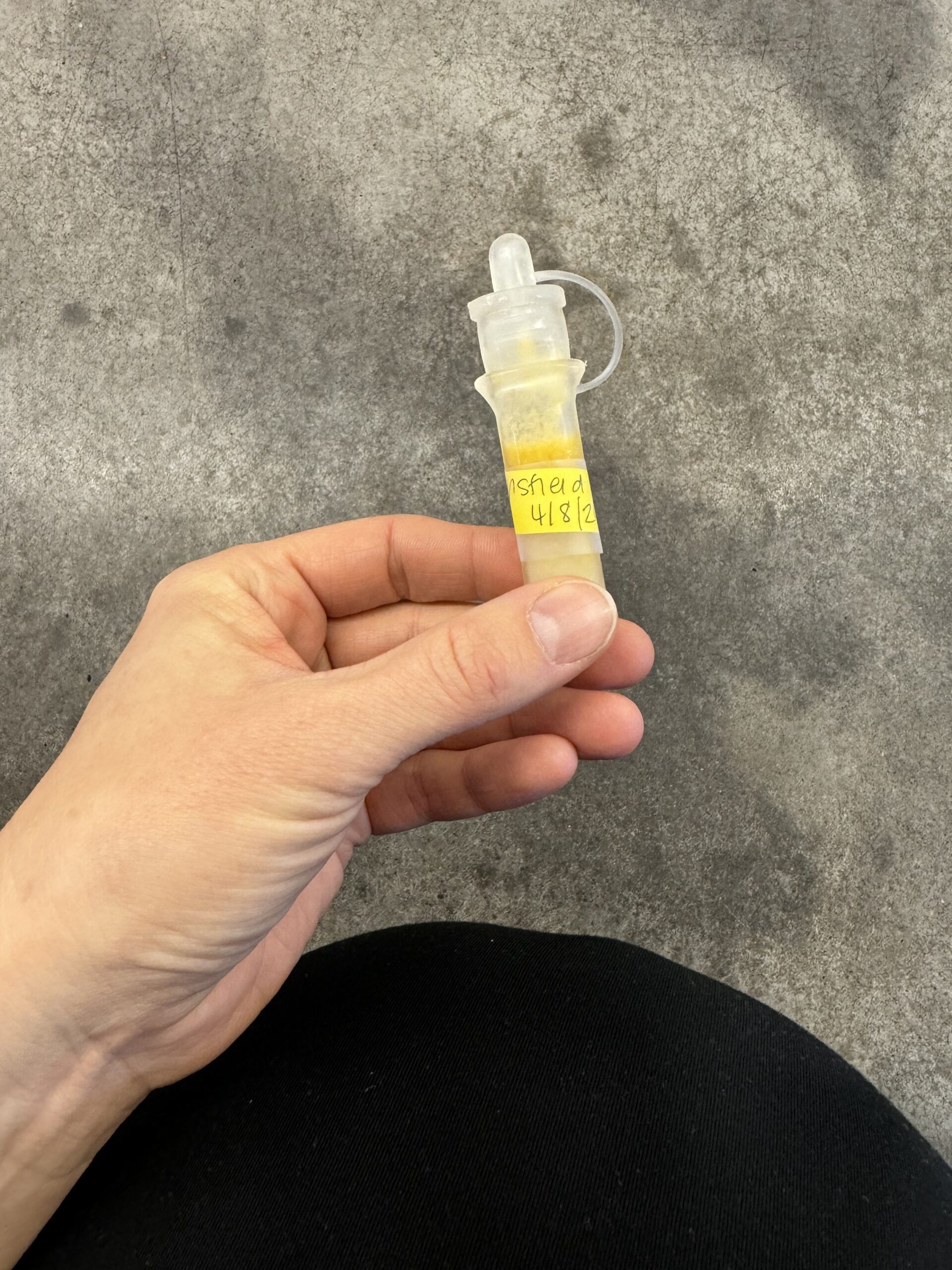Ok friend, never heard of these terms or not worried about it? Good. You probably don’t need to be! But if you have, you may have learned the wrong things. Foremilk and hindmilk are terms that circulate often in the breastfeeding or pumping world. They refer to the milk that empties out of the breast during expression. Hindmilk gets a lot of “praise” for being the rich fatty milk that baby needs, while foremilk is often painted as less attractive or desirable because it is (sometimes) waterier, less fatty, and less nutritive. While some of this could be true, much of it is not – and it is really misunderstood.
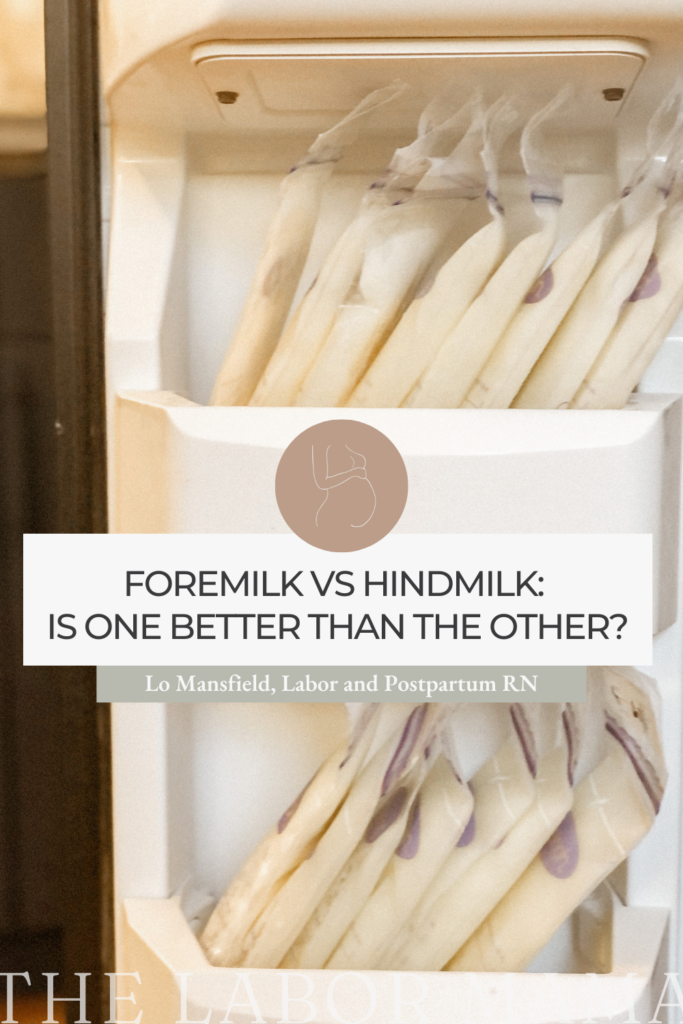
Who is The Labor Mama and Why Am I Here?
Hey friend! I’m Lo – also known around here and social media as The Labor Mama. I’ve spent my nursing career in labor, delivery, and postpartum, have birthed 3 of my own babies, have labored thousands of mamas at the bedside, have taught hundreds of students online, and have even delivered a few speedy little babies with my bare hands (oops).
Here at TLM, I offer online birth classes to empower you the way everyone should be. The education + support I offer gives you experience, evidence, and empathy; you’re getting all of my years of “clinical” RN knowledge, beautifully combined with my real experiences as a mama and a nurse. These are not your hospital birth classes (those won’t do it, I promise), and honestly, birth doesn’t follow a textbook or protocol anyway – you need to know so much more than that.
If you want to connect with me further, head to Instagram. There are hundreds of thousands of us over there learning together daily.
What are foremilk and hindmilk?
Foremilk and hindmilk are NOT different types of milk. Your body produces milk – that’s it – and both are good. But depending on when the milk is being “released” from the body, the fat content can be different. Foremilk is the milk that is released at the beginning of a feed or pumping session. It is usually higher in volume and lower in fat. Hindmilk is the milk released at the end of a feeding or pumping session. It is usually lower in volume and higher in fat. In one particular feeding/pumping session, the hindmilk (the milk at the end) will have a higher fat content than the milk initially released (the foremilk).
What makes hindmilk fatty?
More or less, your breastmilk is a fatty substance. But as milk is produced in your breasts, the fattier components of it (sometimes called globules) stick to the walls of the breast alveoli and stick to each other. As baby starts to eat or a pump starts to express, the fat is essentially ‘stuck’ farther back in the ducts. The first milk that comes out is often less fatty, as much of the fat is still ‘stuck’ behind. As the session continues, the fat makes its way down and out of the ducts.
How long does it take for baby to get hindmilk?
This system is NOT a switch. There is no specific time where the fat content changes over. This is a gradual system that is continuously occurring throughout a feed. Kelly.mom urges you to consider a hot water faucet. When you initially turn on the tap, the water moves from cold, to cool, to warmer, to warm, to hot – the fat in the breasts does the same thing.
For those more visual, consider the different types of cow’s milk you can purchase: you can move from skim, to 1%, to 2%, to whole, to heavy cream. All of these are milk, right? But as you move through types, there is a gradual change from the non-fatty milk to the more fatty versions.
Prepping for baby and want a third trimester checklist? I got you! Snag your copy right here!
Is foremilk ever fatty too?
YES! And this is what I believe is one of the biggest misconceptions or misunderstandings floating around. The fat content of the milk being released IS ABOUT THE TIME BETWEEN FEEDS OR PUMPING SESSIONS, OR THE EMPTINESS OF THE BREAST. When your breasts are really full (the time between the feeds or pumping sessions has been long), you will see that waterier, low fat milk as the foremilk and progressively move to that fattier hindmilk. However, when your breasts are more empty (the time between the feeds or pumping sessions has been short), you will see a fattier, richer milk released right away. In this scenario, the foremilk is rich and fatty!
Foremilk gets a bad rap for being the watery, non-nutritive milk, while hindmilk gets all the glory for being the fatty “good” milk. Let go of this misconception. It isn’t always true. In one particular feeding/pumping session, the hindmilk at the end will be fattier than the foremilk from beginning, but if the time between feeds/sessions has been short, that foremilk can be rich, fatty, and creamy too.
How do you ensure baby gets hindmilk?
Let’s go back to the water faucet example from Kelly.mom. If it has been awhile since you’ve “turned on the hot water tap,” it takes some time for the water to heat up. However, if you just used the hot water tap, it will warm up a lot quicker and be warmer right from the start. The fat content of your milk is the same. When your breasts are REALLY full (or it’s been a long time since the ‘tap’ has been used) it takes some time to get to the rich fatty milk (the hot water). But when your breasts are emptier (the ‘tap’ was more recently used), the fatty milk (warm water) is right there from the start and quickly gets fattier (hot water).
Because of the way this system works, it is important to allow your child to fully empty one breast before moving them to the next. You also want to allow them to dictate when they are finished as opposed to having them on a clock. This ensures that they do get to whatever heavier, richer milk may be waiting for them at the end.
Real life examples:
- Normally, baby wakes up at 2 am and 6 am to feed. For whatever reason, baby skips both of these wake-ups and sleeps until 7am. I have to pump at 6am because I’m so full and uncomfortable. That foremilk is super watery (sometimes more bluish in color) because my breasts are so full and that fat has been pushed way back in the milk ducts (a much longer time between feeds).
- I feed my baby around 7 am every day. I then pump around 8 or 830. This pumped milk is VERY fatty right away (the foremilk is). This is because my breasts are emptier (and there has been a much shorter time between feeds).
What is foremilk and hindmilk imbalance?
Many hear about (and worry about) a foremilk and hindmilk imbalance as well. The new terminology for this is actually lactose overload. And while this can occur, it is not nearly as common as it may seem.
What causes lactose overload?
Lactose overload is most commonly associated with those who have an oversupply of milk, babies who switch frequently back and forth between breasts, or those who cut feedings short based on the clock.
In these situations, baby may get too much watery milk, which moves through the body quickly and the lactose in the milk can’t be broken down and digested. Fattier milk actually moves slower through their body, so baby’s have the time they need to break down and digest the lactose. If babe gets too much of the waterier milk, they might experience lactose overload. This is not very common in exclusive pumpers, since all the milk from each expression is always combined together.
Signs that baby may have lactose overload:
- Baby is fussier than normal
- Baby is gassier than normal or becomes gassy
- Baby seems to have symptoms of colic (frequent crying, multiple days in a row)
- Baby is passing consistently green, frothy poops
How to correct lactose overload
A foremilk/hindmilk imbalance can usually be corrected. Amanda from Exclusive Pumping discusses some of the ways you can try to correct any issues at the bottom of her article here. If you have any concerns about your supply and the subsequent effect on baby, please reach out to your provider.
Should you throw away foremilk?
When breastfeeding, many now use milk catchers like the Haakaa, Elvie Catch or Elvie Curve. These are tools that help catch any foremilk that may leak from the breast not being nursed on (and yes, I love them too)! Because these tools catch only the intial foremilk, there’s a worry that this isn’t good milk to give to baby because it isn’t fatty milk.
But wait – you know that isn’t always true now, right? Foremilk does frequently get that bad rap for being less nutritive and hindmilk gets all the glory for being the “good,” fatty milk. One last reminder to let go of this misconception. It isn’t true. Like I’ve mentioned, if there’s been a long time between expressions, the hindmilk at the end will be fattier than the foremilk from beginning. But, if the time between feeds/sessions has been short, that foremilk will be rich and fatty and creamy too (and that’s what will be in that milk catcher)!
If this is a worry of yours, remember that you can combine your expressions all together. Just make sure they are labeled as the oldest collection. And in general, I would also suggest to you that you should never throw breastmilk out! There is always a way to use it.
The takeaway on foremilk and hindmilk
Should you worry about foremilk and hindmilk? Probably not. Like I mentioned at the beginning, this is talked about a lot but I’m not so sure we really need to hear so much about it. While things can change from feed to feed, research indicates that if you don’t cut feedings short, over the course of the full day babies receive the amount of fat they need. For the vast majority, this topic can truly be one you can more or less forget about.
Did you have foremilk/hindmilk issues? Did you do anything to correct them? Let me know in the comments? xx – Lo
* There’s a full discussion about all of this on our Instagram community as well. Join me there!
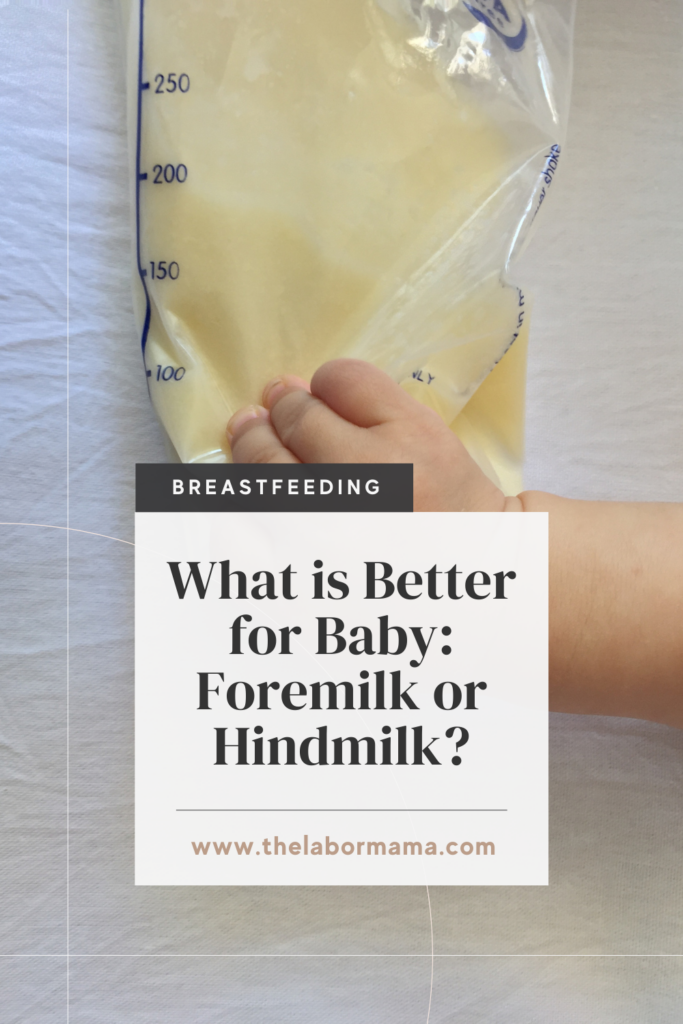
More resources (and freebies!) for you to take a peek at:
- Comprehensive Birth Plan and Birth Priorities templates
- A complete Third Trimester Checklist
- The RN + mama of 3 Ultimate Packing List
- The Labor Mama online birthing classes for every family
A note: This post may include affiliate links. This means if you make a purchase after clicking a link, I will earn a small commission (thank you)! Rest assured, this comes at no additional cost to you. You can read TLM’s full disclosure here.
